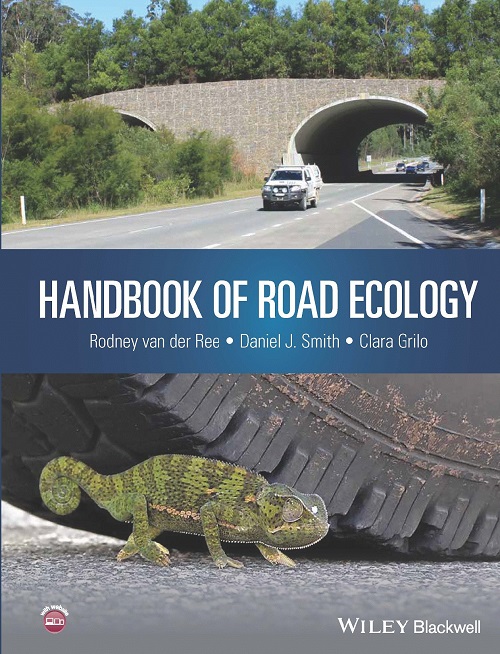Title: The Handbook of Road Ecology
Editors: Rodney van der Ree; Daniel Smith and Clara Grilo
Summary:
Linear infrastructure, such as roads, railways, power lines, pipelines, tracks and trails and the vehicles that travel on them are critical to supporting economic growth and development. However, the ecological impacts of linear infrastructure and vehicles can be massive, and usually negative. These impacts include habitat loss, fragmentation of habitats and populations, mortality of wildlife due to collision with vehicles, weed and pest animal invasion, changes to microclimates, elevated rates of poaching and wildfires, to name but a few. Fortunately, the Handbook of Road Ecology, published by Wiley in July 2015, provides solutions to each of these issues, plus more, ensuring that if adopted, the future transportation networks can achieve economic growth while avoiding or minimising the negative ecological and environmental outcomes.
The Handbook of Road Ecology is an authoritative volume with 62 chapters from >100 of the world’s leading researchers, academics, practitioners and transportation agency personnel from 25 countries. The book spans the project continuum, from planning, approval, funding, design, construction, maintenance, with the need for research and monitoring emphasised throughout.
Each chapter summarises important take-home lessons and principles of relevance to all types of linear infrastructure, and all stages in the life of a project, including retrofitting of existing infrastructure. Chapters are stand-alone, but the extensive cross-referencing ensures that the information and best-practice case studies complement each other without repetition. With over 550 pages and richly illustrated with color photos and drawings, the Handbook of Road Ecology is an essential reference with practical and innovative advice and solutions.
The Handbook of Road Ecology is an accessible resource for practitioners in developing and developed countries, as well as government transportation agencies, government environmental and conservation agencies, NGOs, and road funding and donor organisations.
The book itself is available for purchase from the publisher here and they are also offering free copies to practitioners in developing countries. You can find out more about it here.


 CI is a non-profit, non-commercial portal that aims to facilitate wildlife and nature conservation by providing reliable information and the tools needed to campaign effectively.
CI is a non-profit, non-commercial portal that aims to facilitate wildlife and nature conservation by providing reliable information and the tools needed to campaign effectively.